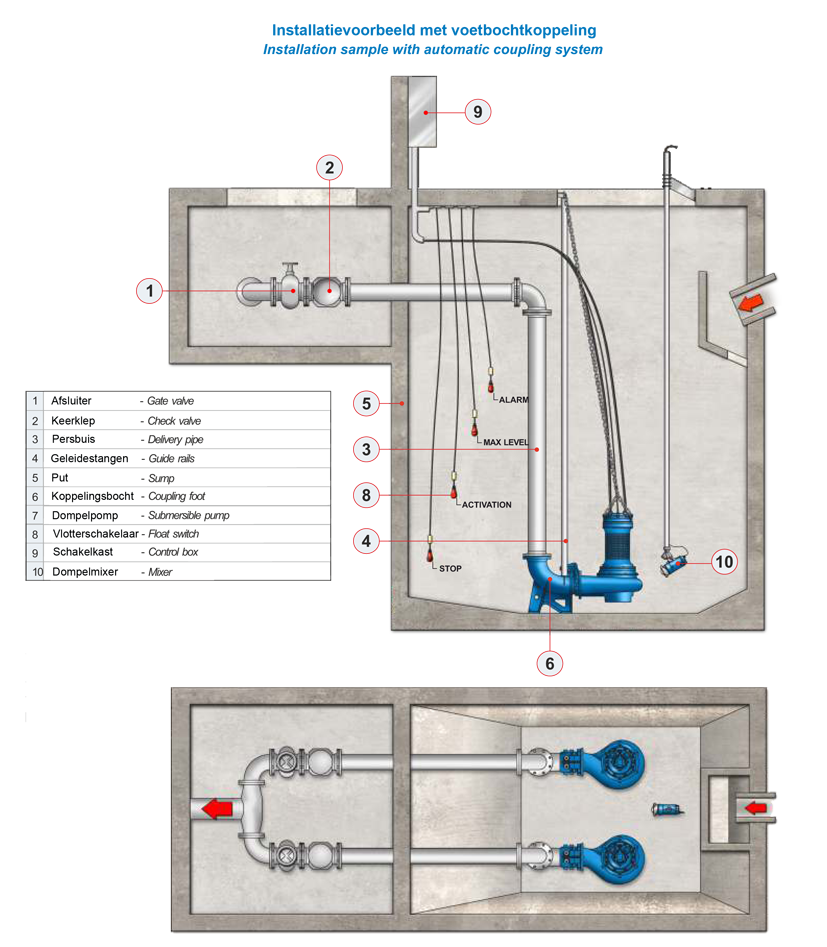Selecting the right pump is very important. Using the wrong pump can result in high maintenance costs, a short pump life, and high energy consumption. However, because of the many types of pumps, it can be hard to select the most suitable pump. The most crucial factor to consider is the environment in which the pump will be installed. This page highlights the features of some well-known pump types.
What to look out for when selecting a pump?
Some general aspects that are important when selecting the proper pump are:
- The placement of the pump. For example, when the pump is installed submerged or dry. This will affect the suction of the pump.
- The liquid that needs to be pumped. If, for example, corrosive liquids are to be pumped, this will affect the selection of materials and components for your pump.
- Pump capacity. The maximum amount of liquid a pump can pump in a given time.
- The delivery head. The amount of pressure a pump has to deliver.
So, as you can see, the best suited pump for each situation can differ a lot.
Which types of pumps are available?
Below you can read about some frequently used pump types that we offer.
Centrifugal pumps
A centrifugal pump works based on a centrifugal force. Utilizing a rotating movement, driven by an impeller or rotor, the liquid is pumped. This type of pump includes an electric motor, impeller, and pump housing.
Centrifugal pumps cannot pump without liquid (running dry). For this reason, they are not able to pump air. However, centrifugal pumps are compact in size and deliver a constant volume flow.

Positive displacement pumps
With positive displacement pumps, we make a distinction between oscillating- and rotating positive displacement pumps. With the first type, the displacement body is moved backward and forward to exert the suction and pressure force. A rotating displacement pump on the other hand, moves the liquid by rotating the pump elements. A positive displacement pump can be used when it is no longer possible to use a centrifugal pump. This can be the case when there are specific suction conditions or when there is a need for accurate dosing.

Submersible pumps
When a pump is completely submerged in the liquid that needs to be pumped, we speak of a submersible pump. This could be the case when draining a well. In this example, the pump is located at the bottom of the well. A submersible pump can pump the liquid up to the desired height if this is within the capacity of the pumps' engine.

Get Informed
As you have noticed, there are many different pumps, each suitable for a different situation. On our product page, you will find all the different types of pumps we offer at IB Pompen. We would be happy to provide you with advice to help you selecting the right pump. So, feel free to contact us without obligation!


